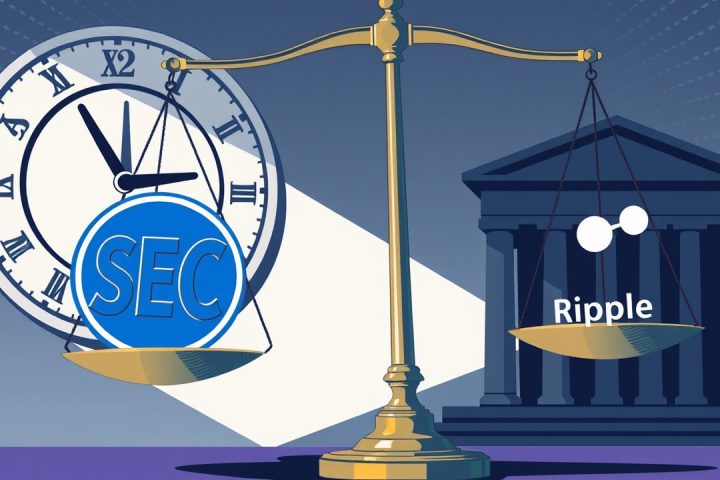Advertisement
Begin Your Crypto Experience with Coinbase! Join countless investors globally who rely on Coinbase for safe crypto transactions, investments, savings, and earnings. Easily buy Bitcoin, Ethereum, and other cryptocurrencies!
Transitioning to a Hardware Wallet
If you’re serious about the security of your cryptocurrency assets, transitioning to a hardware wallet is one of the most effective measures you can adopt. The benefits of hardware wallets are well-recognized; they keep your private keys stored offline, significantly reduce the risk of malware threats, and grant you complete control over your digital assets. If you are already considering which device suits you best, rest assured there are multiple reliable choices from brands like Ledger and Trezor, including newer options that support various blockchains.
Setting Up Your Trezor Safe 3
To assist you in setting up your hardware wallet, this guide will detail the process from unpacking to ensuring your device is secure with a PIN and seed phrase backup. For demonstration purposes, we’ll be using the Trezor Safe 3 — a user-friendly device suitable for novices yet robust enough for more experienced users. It’s also a fantastic choice if you wish to engage in decentralized finance (DeFi) or use your hardware wallet with MetaMask.
Unboxing Your Trezor Safe 3
Before commencing setup, let’s review what’s typically included with a Trezor Safe 3. This will be similar across leading models available in 2025:
- Trezor Safe 3 unit sealed to indicate it has not been tampered with.
- USB-C cable.
- Two recovery seed cards for backing up your wallet.
- Quick start instruction guide.
- Trezor stickers.
Initial Verification
Before connecting your hardware wallet, assess the packaging for its condition:
- Ensure the seal is intact and undamaged.
- Confirm that the holographic sticker on the USB port is unbroken; this is crucial for securing your device. Newer models (from April 2024 onward) feature enhanced seals for additional protection against tampering. If anything appears suspicious, reach out to Trezor’s support team.
Powering Up Your Device
Once verified, remove the sticker and plug the device into your computer. The Safe 3 will turn on immediately, as it operates without needing a battery or power button. You’ll notice a display screen and two buttons, which will be utilized to confirm actions and manage your cryptocurrency.
Setup Process
The setup process takes approximately 10-15 minutes. You’ll need access to a computer and a pen for important notes. Here’s a summarized procedure:
- Download Trezor Suite: Visit the official Trezor website and get the Trezor Suite application compatible with Windows, macOS, Linux, or via web browsers. Launch it, connect your Safe 3, and follow the setup instructions.
- Install Firmware: If your device doesn’t have pre-installed firmware, begin this process to ensure optimal security.
- Authenticate Your Device: In Trezor Suite, select the verification option and press the right button on your device when prompted, confirming its authenticity.
- Device Orientation: Follow any guidance the device may provide to familiarize yourself with button functions.
- Create a New Wallet: Choose between establishing a new wallet or recovering an existing one.
- Security Backup Method: Decide on a backup method, opting for the standard seed backup for simplicity unless you’re more experienced with advanced techniques.
- Confirm Backup Preference: Use the buttons on your device to finalize this choice and agree to terms.
- Document Your Recovery Seed: The device will generate a random recovery seed composed of 12, 20, or 24 words. Securely note this down on your provided cards and refrain from digital records.
- Seed Verification: You will be prompted to confirm several words from your seed list as part of this vital backup step.
- Set a PIN: Create a memorable yet secure PIN, keeping in mind it can be quite long. If forgotten, the wallet will require a reset using the recovery seed.
- Expand Coin Types: Choose which cryptocurrencies to activate and get ready for transactions. Thereafter, you may personalize your device’s name and homepage before accessing your dashboard.
Congratulations! If you diligently followed these steps, you have successfully set up your hardware wallet, a significant move towards secure cryptocurrency management.
Receiving Funds Securely with Your Wallet
Once your Safe 3 is operational, receiving cryptocurrency is straightforward:
- Select the relevant account in Trezor Suite for the cryptocurrency you wish to accept. Click on “Receive” to generate an address.
- Validate the generated address displayed on your Trezor’s screen. Always ensure the address matches what’s on your device to avoid malware interference.
- Use the displayed address or QR code to complete transactions. Your Trezor doesn’t need to be connected continuously; funds get processed on the blockchain and will update upon reconnect.
Logistics for Sending Crypto
Sending cryptocurrency securely through your hardware wallet keeps your private key offline. Here’s how to initiate a send transaction:
- Navigate to the account containing the asset you want to dispatch and select “Send.”
- Input the recipient’s address and the desired amount. Always cross-check the address entered to minimize errors.
- Choose your fee level depending on the urgency of the transaction.
- Confirm the transaction on your device’s screen, checking displayed details before approval.
- Your transaction will now be sent securely without exposing your private keys.
Advanced Use with MetaMask
To utilize your Trezor Safe 3 for decentralized applications or NFT minting:
- Connect with MetaMask by selecting it within your browser and choosing the Trezor connection option.
- If necessary, plugin your Trezor and follow any prompts to install supporting software.
- Select an Ethereum address from the list provided by MetaMask and unlock it for transactions.
Security Reminder: Always use the Trezor screen for verifying transaction details, as browser information may be compromised.
The Importance of Hardware Wallets in 2025
As the cryptocurrency landscape continues to evolve, hardware wallets remain pivotal for ensuring asset security—whether you’re involved with Bitcoin, DeFi, or NFTs. Tools like recovery seed phrases and connections to applications such as MetaMask equip users with robust protection without sacrificing convenience.
If the Trezor Safe 3 meets your needs, it is currently available at a discounted rate via the provided link, an excellent first step toward secure, self-managed crypto ownership. Still undecided? Consider checking the updated 2025 guide on leading hardware wallets, which includes a variety of setup guides and advanced models for a wider reach in crypto management. It’s essential to conduct thorough research before making any purchases as this article contains affiliate links and should not be interpreted as investment advice.




